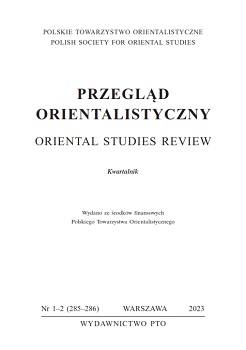Dagger and Combat Knife in Bagratid Armenia (Late 9th–Mid 11th Century)
Dagger and Combat Knife in Bagratid Armenia (Late 9th–Mid 11th Century)
Author(s): Dmytro DymydyukSubject(s): Archaeology, Social history, 6th to 12th Centuries
Published by: Polskie Towarzystwo Orientalistyczne
Keywords: Armenia; Bagratids; combat knife; dagger; Byzantium;
Summary/Abstract: The article analyzes the Armenian short-bladed edged weapons (cold weapons) of the Bagratid era (late 9th–mid 11th centuries). The author distinguishes two types of such weapons – daggers and combat knives, which were used as backup weapons after the loss of the main one on the battlefield or as the main weapon of personal defense in everyday life, which is especially emphasized in the Armenian chronicles of the time. It is noted that there are practically no references to daggers (դաշույն – dashuyn) in written sources, but there are descriptions of knives (դանակ – danak) used for combat purposes. The author analyzes pictorial sources depicting knives (miniatures “The Kiss of Judah” (11th century) and “The Sacrifice of Isaac” (10th century), as well as reliefs from the Holy Cross Cathedral on Aghtamar Island (915–921), where commoners, fighting against animals, possibly hold combat knives or daggers. The criteria for distinguishing between combat and household blades have been developed, thanks to which, among the entire array of archaeological material, we have identified and described one dagger from Dvin (9th century) that had a combat purpose, taking into account its size, large width, and length of the blade.
Journal: Przegląd Orientalistyczny
- Issue Year: 286/2023
- Issue No: 1-2
- Page Range: 31-42
- Page Count: 12
- Language: English

